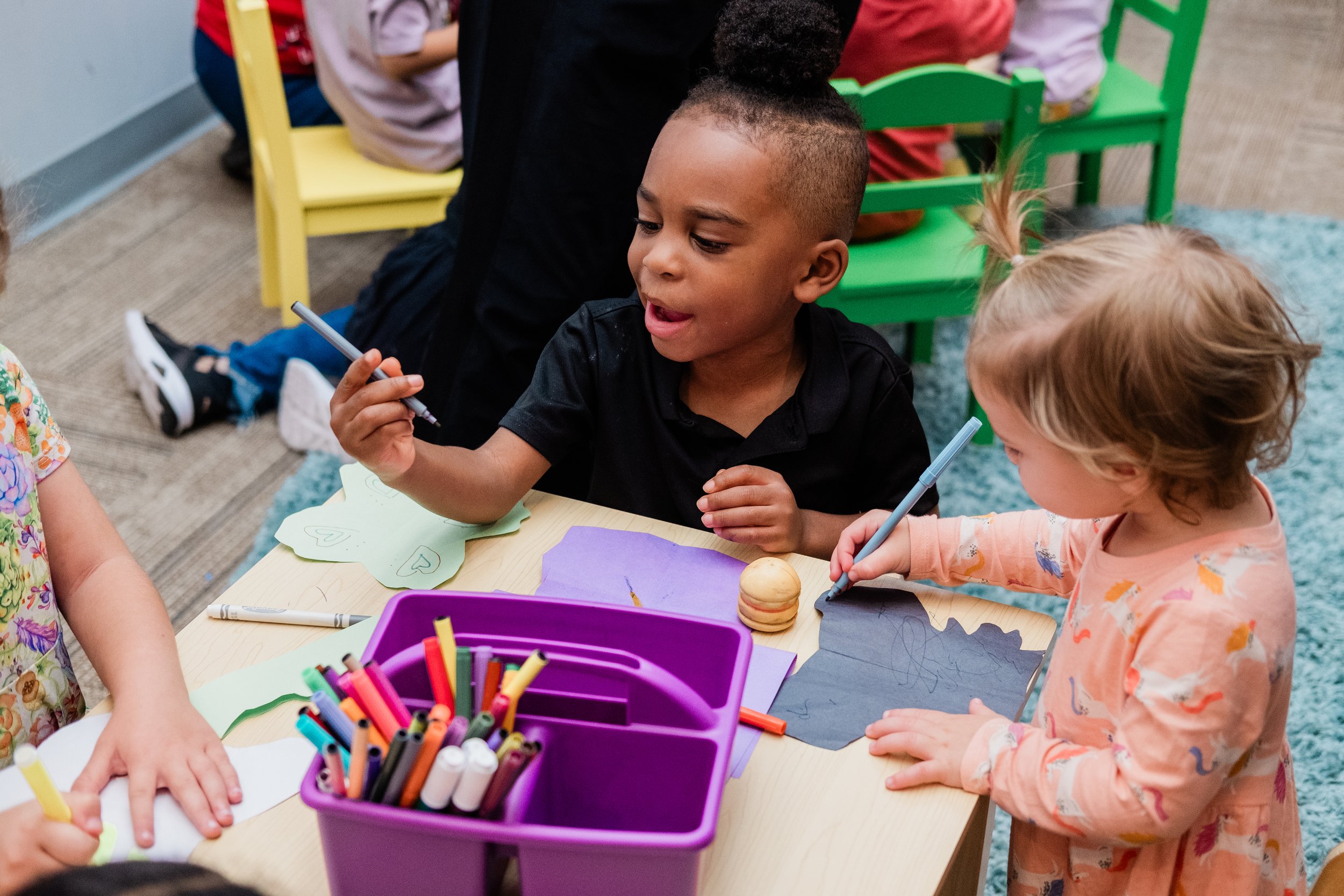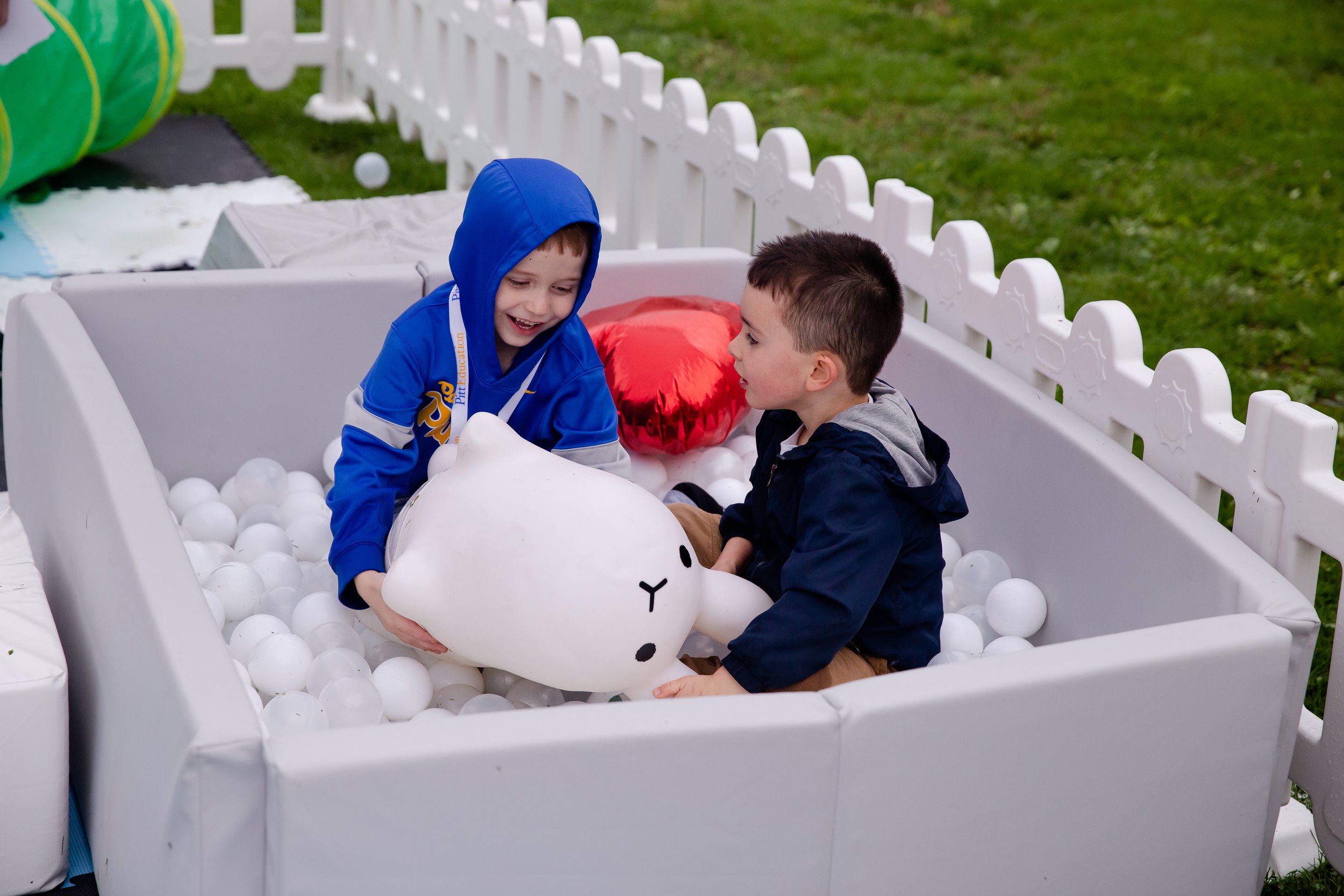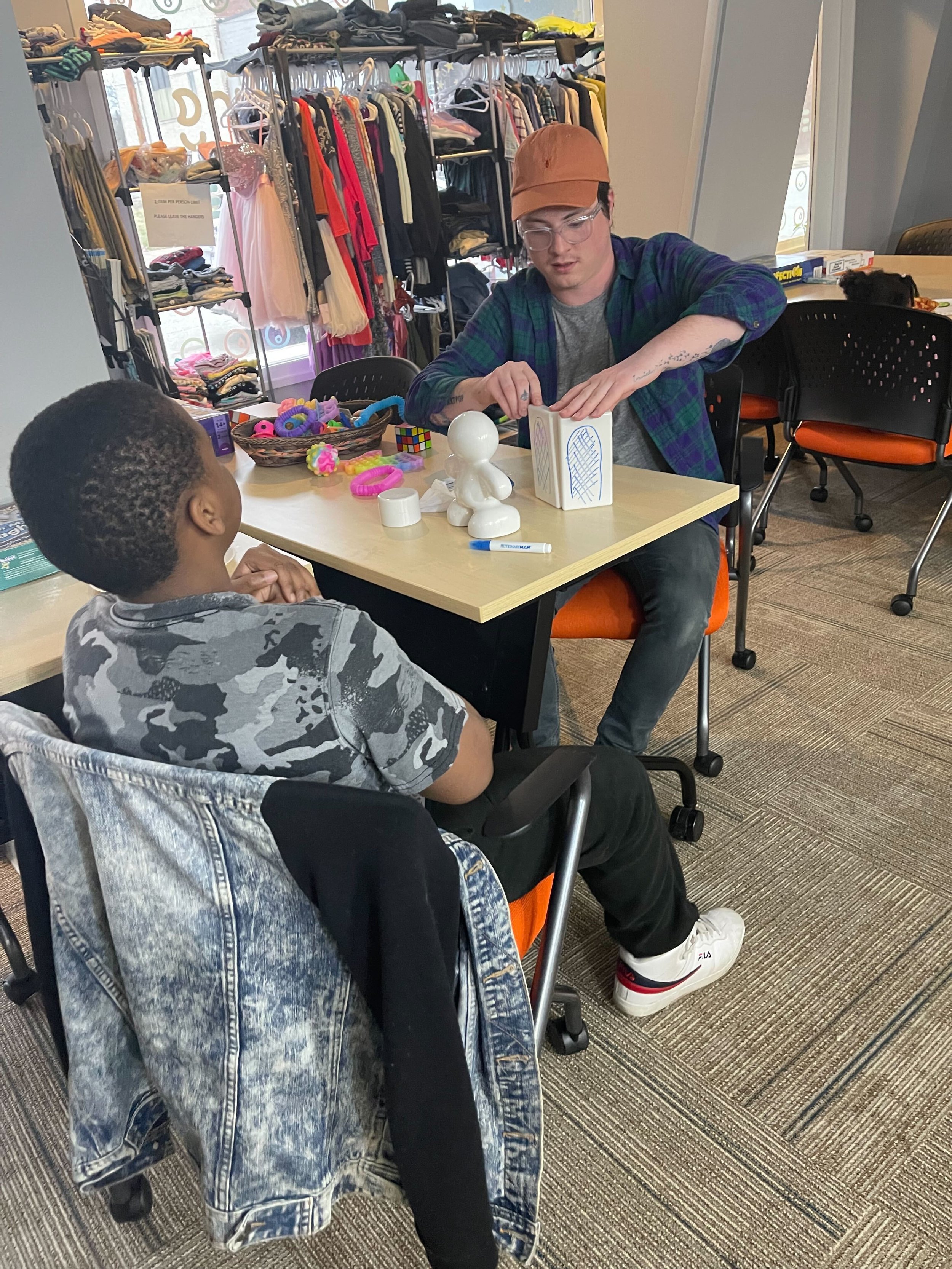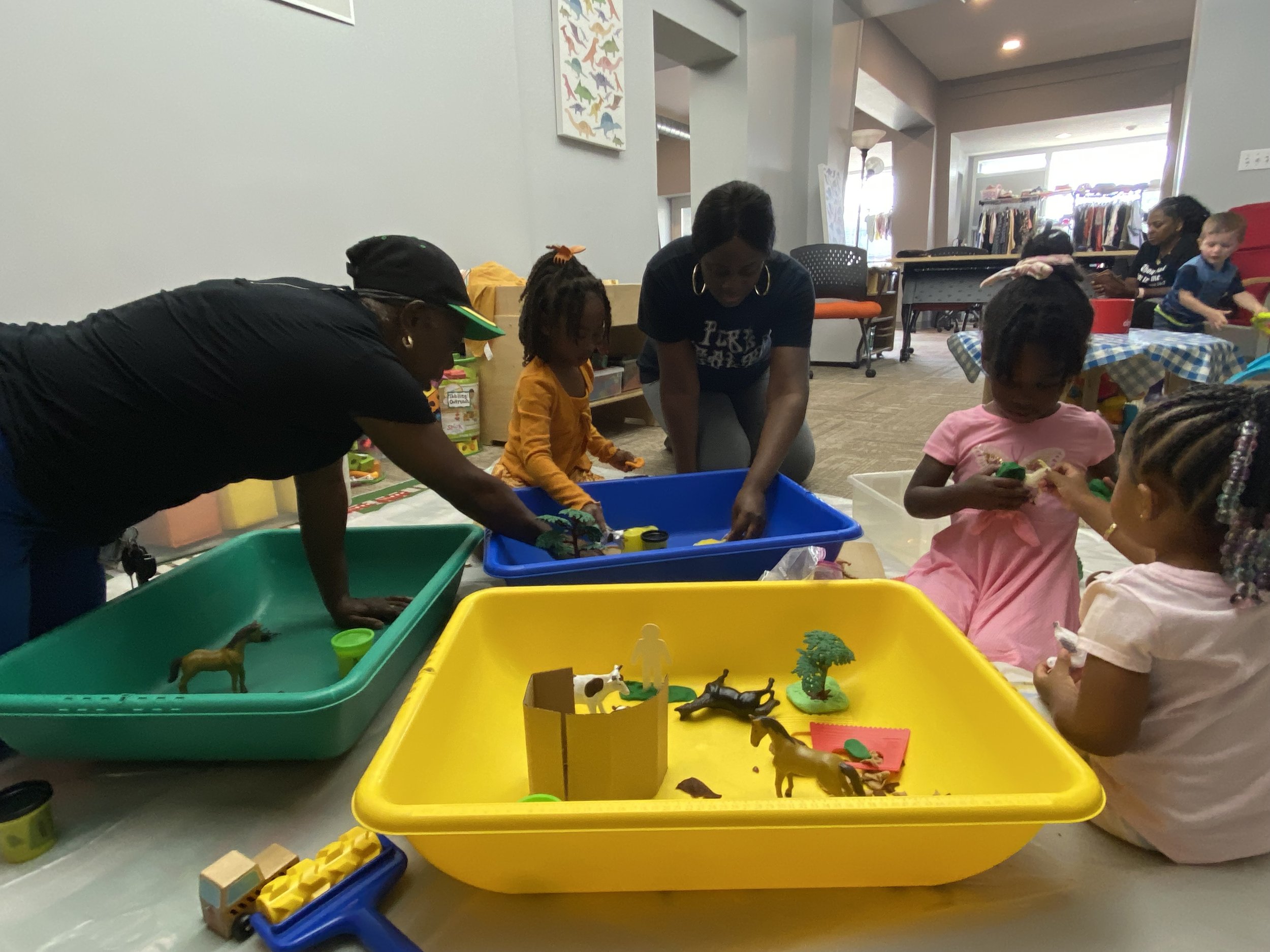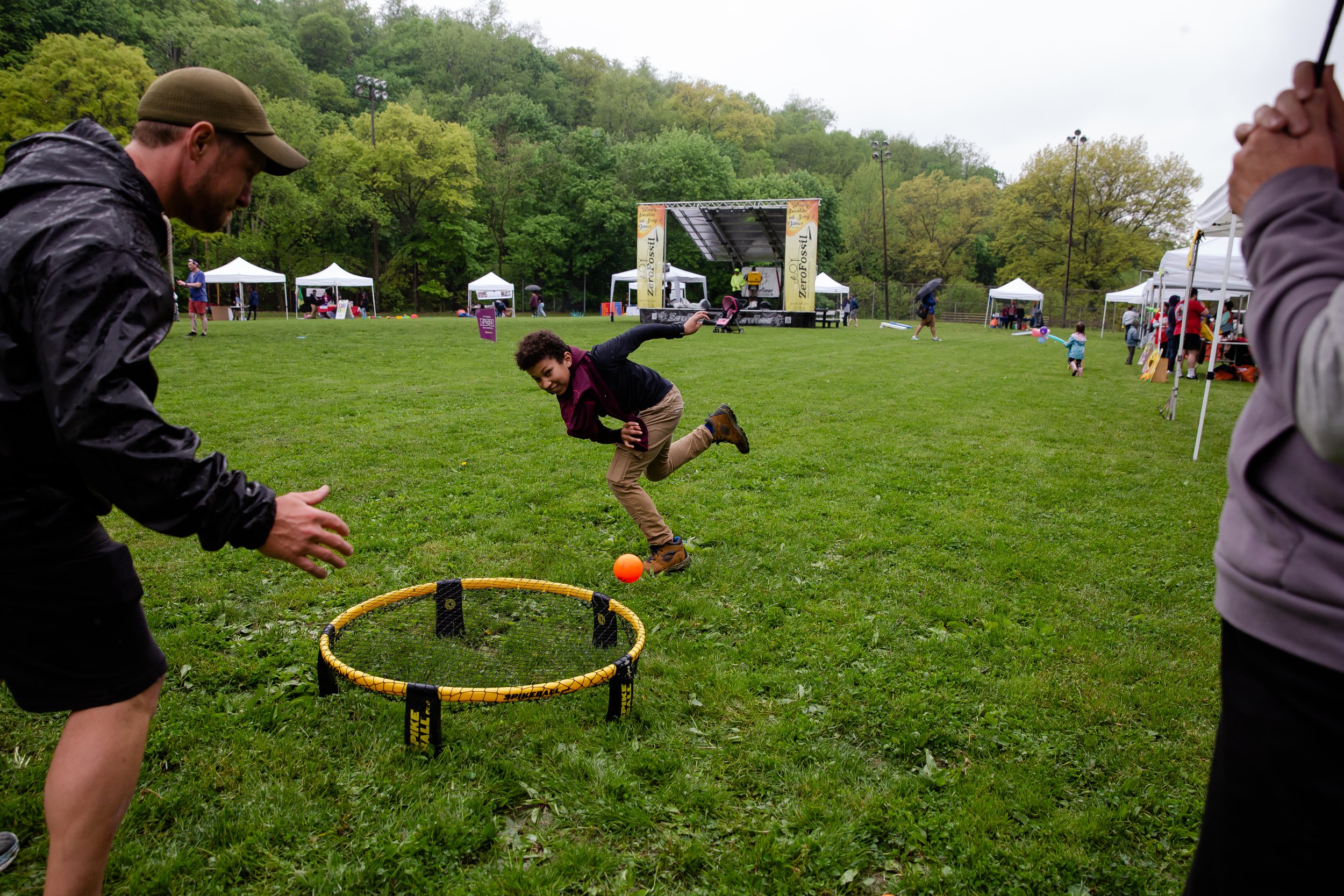
NEWS
Join Playful Pittsburgh at NFL PLAY 60
Children of all ages are invited to get up and get active with the Western Pennsylvania Sports Museum for a football-fueled day of fun.
Children of all ages are invited to the NFL PLAY 60 Training Camp at the Western Pennsylvania Sports Museum on Saturday, February 3 from 10 a.m. to 2 p.m..
About NFL PLAY 60
Gear up for an action-packed experience at the NFL PLAY 60 Training Camp, sponsored by DICK’S Sporting Goods, on Saturday, Feb. 3! Children of all ages are invited to get up and get active with the Western Pennsylvania Sports Museum for a football-fueled day of fun.
Playful Pittsburgh will be at the event with oversized games for all to enjoy. Other activities include:
A mini-NFL Combine, where you can test your speed in the 40-yard dash, assess your passing accuracy. and challenge your agility in a series of quick-hitting drills
Physical challenges located throughout the Sports Museum
A touchdown celebration contest
This event is presented in partnership with the Pittsburgh Steelers and NFL PLAY 60, the National Football League’s health and fitness campaign to encourage young fans to be active for at least 60 minutes each day.
Register
All NFL PLAY 60 Training Camp activities and access to History Center exhibitions are free for children ages 17 and younger. Parents and caregivers are invited to be spectators and cheer on their players as they participate.
Regular admission applies for adult visitors. For additional questions, please contact programs@heinzhistorycenter.org.
Advance registration is encouraged, but not required. Register.
Westinghouse Park Selected as One of 19 Nature Everywhere Communities
The Nature Everywhere Initiative aims to increase equitable access to a healthy, natural world by working to reduce disparities in housing, employment, food, health, and education.
The City of Pittsburgh, in partnership with the Outdoor Inclusion Coalition, Westinghouse Academy, Homewood Children’s Village, and Operation Better Block, has been selected as one of 19 U.S. Nature Everywhere Communities by The Children & Nature Network, the National League of Cities, and KABOOM!.
About
The Nature Everywhere Initiative aims to increase equitable access to a healthy, natural world by working to reduce disparities in housing, employment, food, health, and education. Nature Everywhere Communities will receive two years of strategic planning, technical support, and start-up funding to develop and implement community-driven plans for connecting children and families to nature-based experiences and learning.
The City will focus its funding on developing Westinghouse Park through a community process that elevates community safety, youth leadership, and school partnerships. They are looking to prioritize equitable access to nature for Black youth in East Pittsburgh by engaging the community, particularly Black youth, in the design of local parks. With a current focus on Westinghouse Park, the team plans to target its efforts in creating new models that engage local communities and youth in park development, using the existing park development tax.
As a first step, the East End Pittsburgh team joined eight other communities for a Nature Everywhere Vision Lab in Austin, Texas in November 2023, to explore proven nature connection strategies and connect with technical assistance experts from the Children & Nature Network, the National League of Cities, and KABOOM!. Over the next two years, the Pittsburgh team will:
Engage youth and community residents in creating visions for equitable access to nature
Map community stakeholders, assets, and gaps
Conduct funding and policy scans
Identify the best nature connection strategies for the Pittsburgh community
Build and deepen regional partnerships
Develop and begin implementing an outdoor inclusion and access plan
Throughout the process, East End Pittsburgh and other Nature Everywhere community teams will have access to a national peer learning network; technical assistance; case-making research; resources, case studies, and planning tools; seed grants of up to $50,000; and eventually, access to larger catalytic grants for implementation. Nature Everywhere partners (Children & Nature Network, National League of Cities, and KABOOM!) will also help communities track outcomes and communicate the impact of their work both locally and nationally.
For more details, read a press release issued by the City of Pittsburgh.
How To Play and Celebrate MLK Day
Martin Luther King Jr. Day is January 15 this year and we are ready to celebrate!
Martin Luther King Jr. Day is January 15 this year and we are ready to celebrate! Martin Luther King Jr. Day celebrates the life of this instrumental American historical figure who dedicated his life to ending segregation and racism in the United States.
Playful Pittsburgh wanted to provide some developmentally appropriate and productive ways to teach your children about this important day.
Books:
MLK 360: A Children’s Booklist About Dr. King’s Legacy, Carnegie Library of Pittsburgh
Martin Luther King Jr. Day for Preschoolers, Kids Care Club
Children’s Books on Race and Equity, Trying Together
Activities:
Martin Luther King Jr. Day Crafts and Activities, Kids Care Club’s Pinterest
15 Inspiring MLK Day Jr. Day Crafts, Artsy Craftsy Mom
A few more:
Sesame Street: Martin Luther King Jr. Day, Sesame Street
Winter Play
Winter offers a unique set of activities that can be enjoyed despite the cold weather.
Ways to Play During Winter
Winter offers a unique set of activities that can be enjoyed despite the cold weather. Here are some ways to play during the winter:
Winter Sports:
Skiing and Snowboarding: Head to a nearby ski resort for some downhill fun.
Ice Skating: Find a local outdoor or indoor rink for ice skating.
Snowshoeing: Explore snowy landscapes with snowshoes on your feet.
Build a Snowman or Snow Sculptures:
Get creative with the snow by building a classic snowman or more elaborate snow sculptures.
Sledding:
Find a hill and go sledding with friends or family. It's a simple and thrilling winter activity.
Winter Hiking:
Bundle up and take a winter hike through a snow-covered trail or forest.
Ice Fishing:
If you enjoy fishing, try ice fishing on a frozen lake or pond.
Winter Festivals:
Attend local winter festivals, where you can enjoy activities, food, and entertainment.
Indoor Activities:
Embrace indoor sports like rock climbing, indoor trampolining, or join a winter sports league.
Winter Photography:
Capture the beauty of winter landscapes with photography. Snow-covered landscapes and frosty trees make for great shots.
Winter Camping:
For the more adventurous, consider winter camping. Just make sure to bring appropriate gear and clothing.
Hot Springs or Sauna:
Relax and warm up in hot springs or saunas after a day in the cold.
Winter Barbecue:
Grill up some winter-themed foods and have a barbecue with friends. Just make sure to dress warmly!
Visit Museums or Indoor Attractions:
Explore museums, art galleries, or indoor attractions to escape the cold while still having an enjoyable time.
Winter Bonfire:
Build a safe winter bonfire in your backyard or a designated area. Roast marshmallows and enjoy the warmth.
Winter Movie Night:
Cozy up indoors with some hot cocoa and have a winter-themed movie night with friends or family.
Holiday Lights Tour:
Take a drive or walk around neighborhoods to enjoy the festive holiday lights and decorations.
Remember to dress appropriately for the weather and stay safe while enjoying winter activities. Whether you prefer the thrill of outdoor sports or the warmth of indoor gatherings, there are plenty of ways to have fun during the winter months.
Benefits of Winter Play
Engaging in play during the winter months can offer a variety of physical, mental, and social benefits. Here are some advantages:
Physical Exercise:
Winter play often involves physical activities such as skiing, snowboarding, ice skating, sledding, and snowshoeing. These activities help maintain fitness levels and improve cardiovascular health.
Vitamin D Intake:
Despite the cold, exposure to natural sunlight during the winter is essential for getting Vitamin D. Outdoor winter play allows for exposure to sunlight, which helps the body produce this vital vitamin.
Mood Enhancement:
Physical activity triggers the release of endorphins, which are known as "feel-good" hormones. Playing in the winter can contribute to improved mood and reduced feelings of stress and anxiety.
Improved Sleep:
Regular physical activity, especially during the colder months, can contribute to better sleep quality. Adequate sleep is crucial for overall well-being and immune system function.
Boosted Immune System:
Exposure to cold weather and engaging in outdoor activities can stimulate the immune system. As long as precautions are taken to stay warm, being in the cold can potentially strengthen the body's ability to fight off illnesses.
Enhanced Creativity:
Building snowmen, creating snow sculptures, or even participating in winter sports can stimulate creativity. Engaging in imaginative play fosters cognitive development and problem-solving skills.
Social Interaction:
Winter play often involves group activities, providing opportunities for social interaction. Whether it's a game of ice hockey, a snowball fight, or skiing with friends, these activities promote social bonds and a sense of community.
Stress Reduction:
Outdoor play in a winter wonderland can be a serene and calming experience. The peacefulness of snowy landscapes and the beauty of winter scenery can contribute to stress reduction and mental relaxation.
Adaptability and Resilience:
Facing the challenges of winter weather, such as navigating snowy terrain or learning new winter sports, helps build adaptability and resilience. Overcoming obstacles in a winter setting can translate to increased confidence in other areas of life.
Appreciation for Nature:
Winter play allows individuals to connect with and appreciate the beauty of nature in its winter form. This connection fosters a sense of environmental awareness and stewardship.
Family Bonding:
Winter activities often provide opportunities for families to spend quality time together. Whether it's building a snowman or enjoying a winter hike, these shared experiences contribute to stronger family bonds.
Enjoyment of Seasonal Traditions:
Winter play often aligns with seasonal traditions and holidays. Participating in these activities can contribute to a sense of joy, nostalgia, and connection to cultural or family traditions.
Remember to prioritize safety when engaging in winter play by dressing appropriately for the weather, staying hydrated, and being aware of potential risks associated with cold temperatures.
Indoor Play and Why It's Fun for Everyone
What is indoor play and why is it important for everyone? Learn about indoor play and the developmental and personal benefits that indoor play fun provides for all ages.
What is indoor play?
Indoor play refers to recreational and leisure activities that take place within the confines of indoor spaces, such as homes, community centers, gyms, or dedicated indoor play areas. Indoor play activities vary from video games to arts and crafts, as well as activities such as board games, puzzles and going to an indoor playground. widely. Indoor play caters to all age groups, cultural backgrounds, and interests.
Research shows one of the benefits of indoor play for everyone is that it encourages creativity and critical thinking. Activities like crafts, reading stories, and art projects support being inventive, where board games encourage problem-solving. Even video games such as Wii Fit and Just Dance promote physical activity.
Other benefits of indoor play include a lower risk of injury and a convenient alternative for days of inclement outdoor weather. Indoor playgrounds, for instance, greatly reduce the risk of danger and injury through soft matting or foam in case of any falls. Some companies even sell indoor gyms for your home at a range of sizes for all ages.
Indoor play for children
Playing indoors can offer a variety of benefits for children. While outdoor play is important for physical activity and exposure to nature, indoor play has its own advantages. Some benefits of children playing indoors include:
Safety: Indoor play environments provide a controlled, safe space for children to play, reducing the risk of accidents or injuries.
Educational Opportunities: Many indoor activities, such as board games, puzzles, and educational toys, offer learning opportunities that stimulate cognitive development and creativity.
Consistency: Indoor play spaces, such as playrooms or family child care centers like The Homewood Early Learning Hub & Family Center, offer consistent play opportunities throughout the year, providing a playful routine for children.
Creativity and Imagination: Indoor environments often encourage imaginative play. Children can create their own games, stories, and scenarios using toys, art supplies, or household items.
Quiet Time: Indoor play can include quieter activities such as reading, drawing, or playing with building blocks, which provides a sensory and physical break from more active and noisy outdoor play.
Accessibility: Indoor play spaces are often more accessible, especially for families who may not have easy access to outdoor recreational areas.
A balanced approach to play, incorporating both indoor and outdoor activities, is ideal for a child's overall development. A mix of various environments and play options can provide a well-rounded and enriching, playful experience for children.
Indoor play for teens
Teenagers can derive various benefits from engaging in indoor activities. Indoor play and pursuits offer advantages for teens (ages 13 through 18), particularly in terms of cognitive, social, and skill development. Even video games and mobile games can provide developmental and cognitive benefits for teenagers. Here are some benefits of teens playing indoors:
Education: Indoor activities, such as reading, learning games, or creative projects, provide opportunities for continued education and skill development outside of typical learning spaces for teens.
Skill Development and Enhancement: Teens can develop specific skills indoors, such as playing musical instruments, coding, writing, or engaging in artistic pursuits, which can contribute to their personal growth and future opportunities.
Creativity and Innovation: Teens can explore their artistic talents, experiment with technology, or engage in problem-solving activities during indoor play sessions.
Development of Productive Hobbies: Pursuing indoor hobbies like painting, writing, cooking, or crafting can be both enjoyable and productive. These hobbies can serve as a healthy outlet for self-expression, stress relief, and overall mental wellness.
Social Interaction: Indoor activities, including video games, board games, or collaborative projects, can facilitate social interaction for teens, and assist with developing and maintaining friendships.
It's important for teens to balance their time with outdoor activities, physical exercise, and face-to-face social interactions. Striking a balance between indoor and outdoor play contributes to an overall healthy lifestyle for teenagers.
Indoor play for adults and seniors
While the concept of "play" may be more commonly associated with children, adults and seniors can also benefit significantly from engaging in indoor activities that promote relaxation, creativity, and overall well-being. Benefits of indoor play for adults and seniors can look like the following:
Stress Reduction: Indoor play can serve as a powerful stress reliever. Engaging in enjoyable activities such as games, crafts, and reading can help adults unwind and reduce tension.
Mental Stimulation: Indoor activities such as puzzles or strategy games can provide mental stimulation, keeping adult and senior minds sharp and potentially reducing the risk of cognitive decline.
Social Interaction: Whether it's through board games, movie nights, or other shared experiences, these type of indoor activities contribute to social well-being for adults and seniors and develop stronger social bonds and camraderie amongst adult groups.
Personal Growth and Improved Mood: Learning new skills or taking up a hobby can contribute to personal growth and development for adults, which helps enhance self-esteem and provide a sense of purpose. Engaging in enjoyable indoor activities also releases endorphins, the body's natural mood lifters. This can lead to an improved overall mood and emotional well-being.
Adaptability: Indoor play can be easily adapted to various adult schedules and lifestyles. As adults, the common reason to not participate in plat is “there is not enough time in the day”. So incorporating a quick game, a creative project, or a longer hobby, adults can fit these activities into their daily routines.
It's important for adults to find a balance between work, responsibilities, and play. Incorporating indoor play into a routine can contribute to a more balanced and fulfilling lifestyle. Indoor play is a valuable aspect of adult well-being.
Indoor play is versatile and can be adapted to suit different preferences, ages, and environments. It provides opportunities for entertainment, learning, and social interaction within the comfort and safety of indoor spaces.
Resources on Indoor Play
Here are some resources and references on indoor play and activities, and the benefits that this play type provides:
Indoor vs. Outdoor Play - is one Better Than the Other?, Playground Centre
7 Benefits of Indoor Play for Children, LiggettVille
Why Playing Indoors Is Just as Important as Playing Outdoors, Indoor Playgrounds International
16 Indoor Group Games & Activities for Adults, TeamBuilding.com
Benefits of Indoor Activities for Older Adults, Samvedna Care
A Parent's Guide to Indoor Play Places in Pittsburgh, Macaroni KID
Big Body and Physical Play: Benefits and Activities for all Ages
Big Body Play refers to physical activities that involve large movements of the body, such as running, jumping, climbing, and rough-and-tumble play. These activities offer a wide range of benefits for individuals of all ages.
Big Body and Physical Play for Children
There are two avenues to physical activity for children: (1) the structured, directed kind that children get in a school physical education program and (2) the unstructured free play of big body play — the rough and — tumble activities and the exuberant and spontaneous gross motor movements that come naturally and instinctively to children.
Frances Carlson, the author of Big Body Play, identifies it as the “very physical, vigorous, boisterous, and sometimes bone-jarring play style that many children love and crave.”
The National Association for the Education of Young Children (NAEYC) endorses big body play in Early Childhood Education, as it is a large support for children’s developing skills, especially social-emotional and linguistic thinking. Through practice with active play, children gain an understanding of themselves in space, learn how to manage and control their own bodies based on how their body can impact that of another, explore verbal and nonverbal communication, and practice turn taking.
Here are some of the key benefits of big body play for children:
Physical Health: Big body play promotes physical fitness by improving cardiovascular health, muscle strength, coordination, and flexibility.
Social Development: Big body play often involves interaction with others, which helps children develop social skills including cooperation, negotiation, and communication while engaging in group activities.
Emotional Regulation: Physical activities allow children to regulate emotions, reduce anxiety, and promote overall emotional well-being.
Cognitive Development: Physical play stimulates the brain and enhances problem-solving skills. Children learn about cause and effect, spatial relationships, and physics through activities like building, stacking, and climbing.
Creativity: Big body play encourages the opportunity to create games and scenarios during play, which enhances children’s creativity and imagination.
Self-Confidence: Overcoming obstacles, climbing to new heights, or learning a new physical skill can provide a sense of accomplishment and self-assurance.
Risk Management: Big body play allows children to assess risks and make decisions.
Sensory Integration: Engaging in various physical activities helps in sensory integration, where the brain processes sensory information from different modalities (such as touch, balance, and body awareness).
Family Bonding: Whether it's a hike, a day at the playground, or playing sports together, big body play activities create lasting memories and strengthen family relationships.
Healthy Lifestyle Habits: Children who enjoy physical activities are more likely to continue being active throughout their lives.
While big body play does offer numerous benefits, safety should remain a priority for anyone participating in big body play with children. Ensuring that proper supervision occurs is essential for children to engage in physical activities safely. Having a suitable environment for physical play is also important for safety and accessibility.
Big Body and Physical Play for Teens
Big body play for teenagers involves physical activities that allow them to use their bodies in dynamic and energetic ways. These activities are not only fun but also promote physical fitness, social interaction, and emotional well-being.
Activity examples of big body play for teenagers include:
Team Sports: Teenagers often participate in team sports such as basketball, soccer, football, volleyball, or rugby. These sports involve running, jumping, and various body movements, promoting cardiovascular health, coordination, and teamwork.
Individual Sports: Activities like swimming, tennis, gymnastics, or martial arts offer teenagers opportunities for big body play while allowing them to focus on individual skills and goals.
Dance: Many teenagers enjoy dance as a way to have fun, express themselves, and stay physically active.
Skateboarding and Rollerblading: Skateboarding and rollerblading involve balance, coordination, and tricks, allowing teenagers to engage in adventurous and physically demanding activities.
Rock Climbing: Indoor or outdoor rock climbing challenges teenagers both mentally and physically. It requires strength, endurance, and problem-solving skills.
Parkour: Parkour is a discipline that involves moving rapidly through an urban environment, negotiating obstacles using running, jumping, and climbing.
Biking: Mountain biking or BMX biking allows teenagers to explore outdoor trails, perform tricks, and enjoy the thrill of speed and movement.
Other Outdoor Activities: Activities such as hiking, kayaking, rafting, or zip-lining offer teenagers opportunities to engage with nature while participating in physically challenging and exciting experiences.
Fitness Classes: Teenagers can attend fitness classes tailored to their age group, such as high-intensity interval training (HIIT), circuit training, or dance fitness classes.
Recreational Games: Teenagers often engage in informal recreational games with friends, such as tag, capture the flag, or ultimate frisbee. These games involve running, dodging, and quick movements, providing an outlet for big body play in a social context.
Big body play for teenagers is not only essential for their physical development but also for building confidence, social skills, and a positive attitude toward physical activity that can last into adulthood.
Big Body and Physical Play for Adults
While the term "big body play" is often associated with children, the concept of engaging in physical activities involving large movements of the body also applies to adults. For adults, these activities may take different forms and offer similar benefits in terms of physical health, emotional well-being, and social interactions.
Here's how big body play can manifest in the lives of adults:
Sports and Athletics: Many adults engage in sports such as basketball, soccer, tennis, or swimming, or various sports leagues, which involve significant physical movements and coordination.
Dance: Dance not only provides exercise but also allows for creative expression and social interaction.
Outdoor Activities: Activities like hiking, rock climbing, kayaking, or skiing involve substantial physical effort and body movement. These activities often take place outdoors, providing a connection with nature along with the benefits of physical activity.
Fitness Classes: Exercise classes often involve dynamic and large body movements. These classes are not only great for physical fitness but also for socializing and meeting like-minded individuals.
Yoga and Pilates: While these practices focus on flexibility and balance, they also involve various large body movements and poses. Yoga, in particular, includes sequences that require significant physical effort and coordination.
Gardening: Gardening involves a lot of physical activity. Digging, planting, weeding, and other gardening tasks require bending, squatting, and lifting, providing a low-impact form of big body play.
Team Building Activities: In corporate or group settings, team building activities often involve physical challenges and problem-solving tasks that require significant body movements, and promote teamwork and camaraderie.
Martial Arts: Martial arts involve rigorous physical training, including various kicks, punches, and stances. Practicing martial arts not only improves physical fitness but also enhances mental discipline and focus.
Playful Interactions: Playful interactions with children or pets can involve activities such as running, chasing, or playful wrestling, which are forms of physical play for adults that promote bonding and laughter.
Fitness Challenges: Participating in fitness challenges, obstacle course races, or mud runs requires a combination of strength, endurance, and agility, encouraging adults to engage in rigorous physical activities.
Engaging in these activities not only promotes physical health and well-being but also fosters a sense of community, reduces stress, and enhances overall quality of life for adults.
Resources on Big Body and Physical Play
Here are some resources and references surrounding big body play and its benefits:
Benefits of Play, and Big Body Play, In Particular, The National Association for the Education of Young Children (NAEYC)
Balancing Safety and Healthy Risk-Taking for Young Children, Psychology Today
Big Body Play: Benefits, Risks, and Myths, Greentrike
Physical Activity for Kids and Teens, Nebraska Extension - University of Nebraska
How Much Physical Activity do Adults Need?, Centers for Disease Control and Prevention (CDC)
Physical Activity for Adults, Nebraska Extension - University of Nebraska
Rough-and-Tumble Play: A Teacher’s Guide 2023, brightwheel Blog



